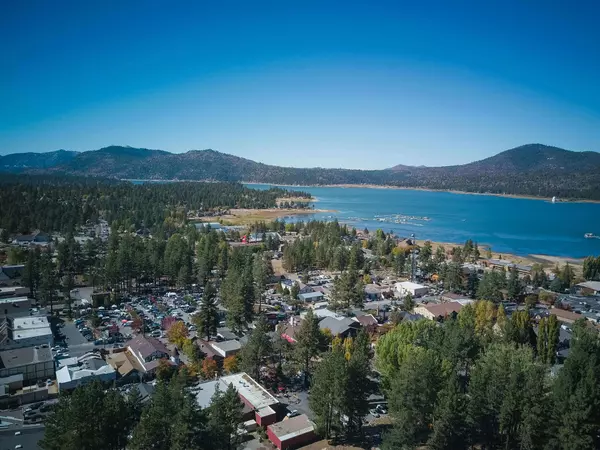How the LA Fires Are Reshaping the Real Estate Market

The devastating wildfires in Los Angeles have left a profound mark on the community, displacing families, damaging homes, and altering the landscape. Beyond the immediate human and environmental toll, these fires also have significant implications for the real estate market in affected areas. Here, we explore the ways in which the LA fires are reshaping real estate trends, challenges, and opportunities.
1. Decreased Inventory in Fire-Affected Areas
One of the most immediate effects of the fires is the reduction in available housing inventory. Homes that have been destroyed or severely damaged are removed from the market, tightening an already competitive housing market. This decreased inventory can drive up demand for remaining properties, leading to higher prices in nearby areas unaffected by the fires.
For homeowners looking to sell in regions adjacent to fire-damaged zones, this reduced inventory could present an opportunity to command higher prices. However, potential buyers may weigh the risks of purchasing property in areas prone to wildfires, which could dampen demand over time.
2. Insurance Challenges for Buyers and Sellers
Wildfires make obtaining and maintaining homeowner’s insurance more difficult and costly. Insurance companies often reassess their risk exposure after major fires, leading to higher premiums or even the refusal to issue new policies in high-risk zones. For buyers, this additional cost can affect affordability and influence their decision to purchase in certain areas.
For sellers, the increased difficulty of transferring or obtaining insurance can delay transactions or deter potential buyers altogether. Working with a knowledgeable real estate agent who understands these challenges is critical to navigating this complex landscape.
3. Shifting Buyer Preferences
The fires have heightened awareness of the risks associated with living in wildfire-prone areas. As a result, some buyers are prioritizing homes in less vulnerable locations or those equipped with fire-resistant features. Properties with fireproof roofs, cleared vegetation, and modern HVAC systems with air filtration are becoming more attractive to buyers.
Additionally, there is growing interest in urban areas or neighborhoods farther from wildland interfaces, as these are perceived as safer from wildfire risks. This shift in buyer preferences may lead to increased demand in these regions, influencing local market dynamics.
4. The Role of Community and Resilience
Communities affected by the fires often rally together to rebuild and support one another, which can foster a strong sense of resilience and camaraderie. This community spirit can positively impact the real estate market by attracting buyers who value living in a close-knit and supportive environment.
Efforts to rebuild can also lead to an influx of investment in fire-affected areas. New construction often incorporates modern safety standards and eco-friendly features, which can enhance property values over time. However, the rebuilding process is lengthy and requires significant resources, which can delay market recovery.
5. Long-Term Implications for the Market
The long-term impact of the LA fires on the real estate market will depend on several factors, including the frequency and severity of future fires, government response, and the availability of disaster relief funding. Areas that consistently experience wildfires may see a gradual decline in property values as buyers and investors seek safer alternatives.
On the other hand, proactive measures—such as improved fire management, stricter building codes, and better community planning—can mitigate these risks and help stabilize the market. Homeowners and buyers should also explore resources like grants, tax breaks, and loans designed to support fire recovery and prevention efforts.
Navigating the Market During Challenging Times
The LA fires have underscored the importance of working with experienced real estate professionals who understand the nuances of a changing market. Whether you’re a buyer, seller, or investor, having a trusted advisor can help you make informed decisions that align with your goals and circumstances.
If you have questions about how the fires may affect your real estate plans or need assistance navigating the current market, I’m here to help. Together, we can find solutions that meet your needs while contributing to the resilience and recovery of our community.
Content by Hailey Potok of The Potok Group
Contact: DRE 02024094
The Potok Group Douglas Elliman
Potokgrouprealestate@gmail.com
Sources:
LAist: Los Angeles Fires and Housing Impact
New York Post: LA Landlords Raise Rent Amid Fires
MarketWatch: Rebuilding After LA Fires and Insurance Issues
The Times: Rebuilding and Long-Term Housing Challenge.
Categories
- All Blogs (16)
- 1031 Exchanges (1)
- Alternative Financing Solutions (1)
- Awards & Recognition (1)
- Beautiful Bill (1)
- Best Neighborhood in OC (4)
- Buyer & Seller Tips (2)
- Buying & Selling Strategies (3)
- California Real Estate (5)
- Client Success Stories (1)
- Closing Day Preparation (1)
- Downpayments (1)
- High-Net-Worth Borrowers (2)
- Home Buying and Selling (4)
- Home Buying Process (1)
- Home Buying Strategies (2)
- Home Buying Tips (4)
- Home Downpayment (1)
- Home Selling Tips (3)
- Housing Market Analysis (3)
- How Brokers Influence the Housing Market (1)
- Industry Standards & Ethics (1)
- Inflation and Economy (2)
- Inside The Potok Group (1)
- Key Players in a Real Estate Transaction (1)
- LA Fire (1)
- Local Real Estate Trends (6)
- Market Trends & Data (4)
- Market Trends from Top Agents (4)
- Mortgage & Lending Tips (1)
- Mortgage and Financing (1)
- Mortgage Insights (4)
- New Big Beautiful Bill (1)
- Orange County Approved Bill (2)
- Orange County Best Cities (2)
- Orange County Living (5)
- Orange County Neighborhoods (1)
- Orange County Real Estate (2)
- Questions to Ask Before Hiring an Agent (1)
- Real Estate Financing (1)
- Real Estate Investment (2)
- Real Estate Market (2)
- Real Estate Market Trends (1)
- Real Estate Market Updates (7)
- Real Estate Myths & Misconceptions (1)
- Real Estate Tips (2)
- Real Estate Tips & Insights (3)
- Realtor Education & Insights (2)
- Retirement Planning & Real Estate (2)
- Self-Employed & Entrepreneur Resources (1)
- Stock Market (1)
- The Importance of Representation (2)
- Tips for Choosing the Best Real Estate Agent (1)
- Wildfire Effect On Real Estate Market (1)
- Wildfires in CA (1)
- Working with Realtors (1)
Recent Posts










GET MORE INFORMATION


